Tuners on 12 fret C. F. Martin Guitars
Martin guitars produced from 1833 to 1929, with necks built with 12 frets clear of the body, generally have one of three styles of tuners: enclosed tuners on a Stauffer style headstock, ebony or ivory pegs on a solid headstock, or geared machines designed to fit a slotted style headstock.
Stauffer Style Gears
The earliest guitars built by C. F. Martin had a headstock in the style of the guitars built by his mentor, Johann Stauffer, which utilised gears enclosed by a metal plate, with six tuning pegs in a row on one side of the headstock, a feature which was later borrowed by the Fender Company.
c. 1820's Guitar attributed to Johann Stauffer
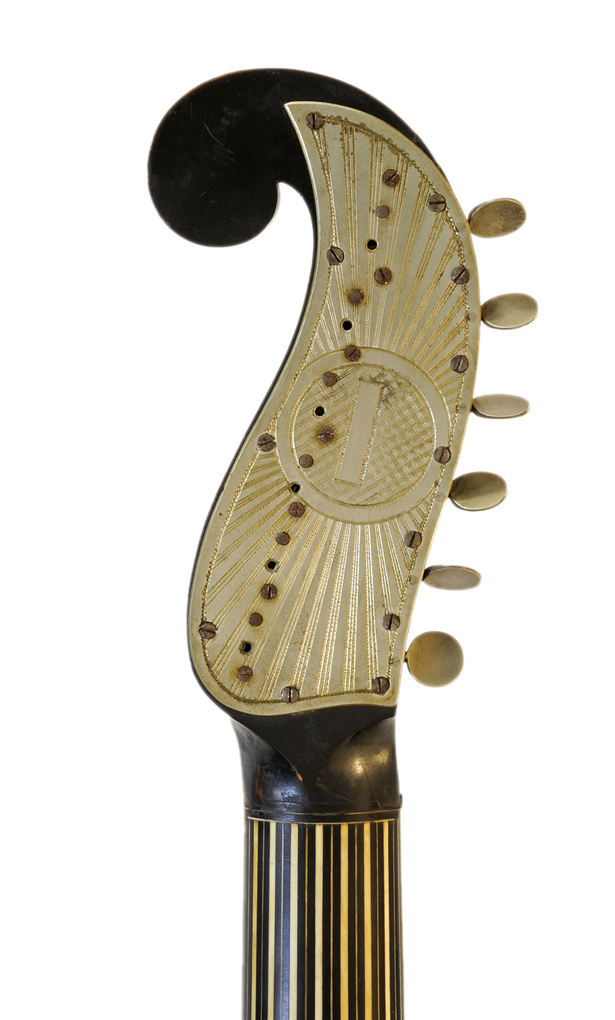
Martin & Coupa Koa
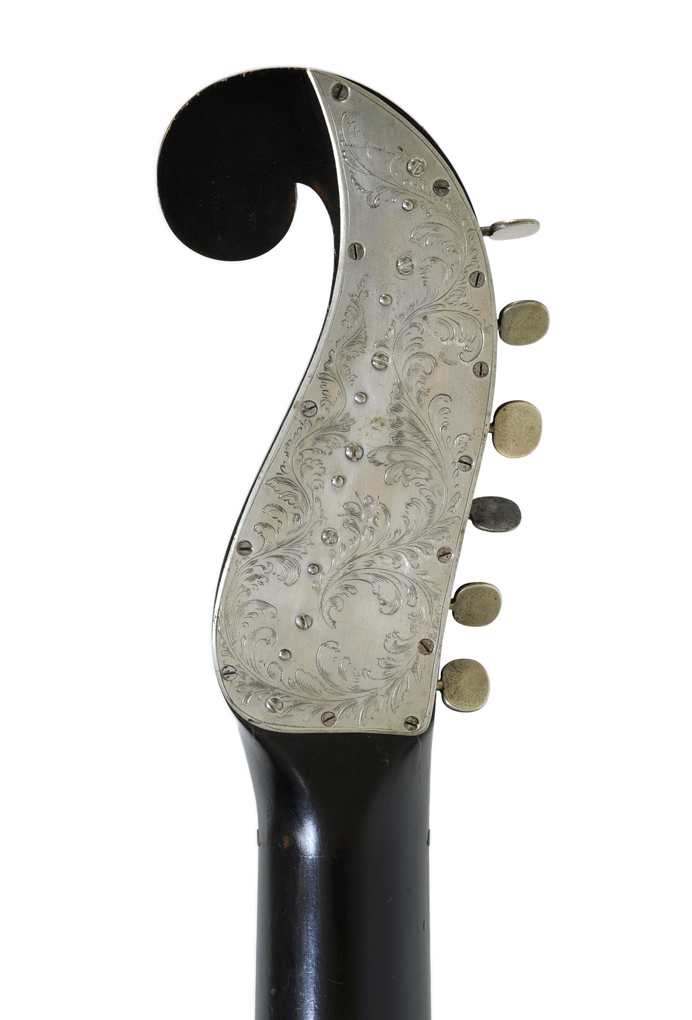
Martin & Coupa Spanish
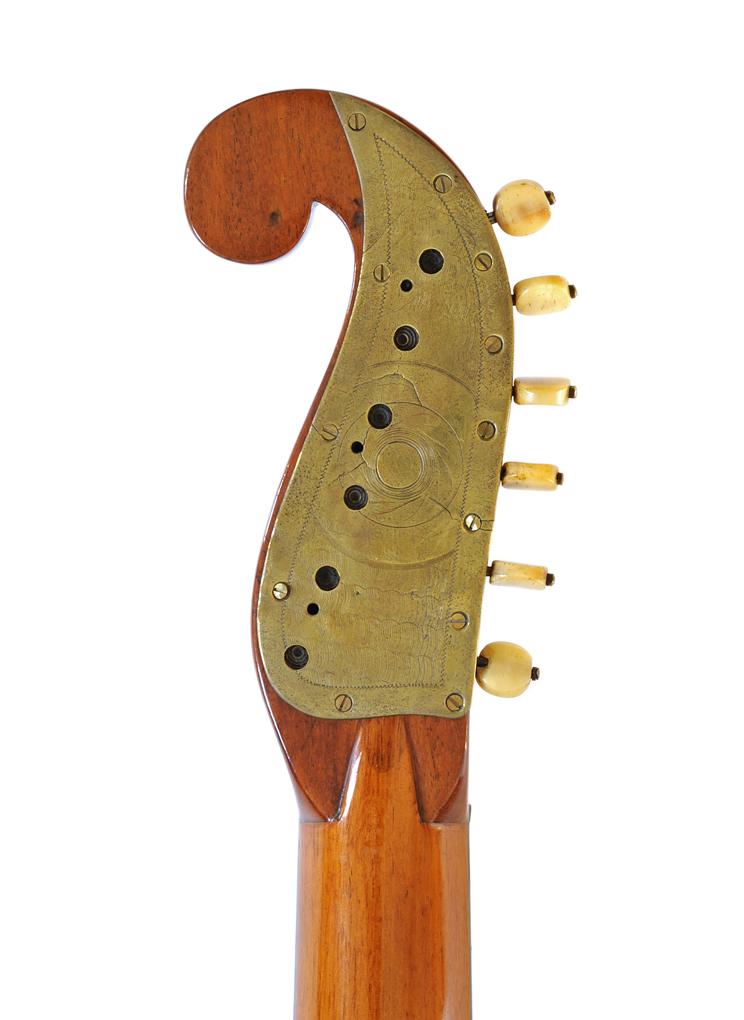
1840's Ivory Fingerboard Spanish Martin
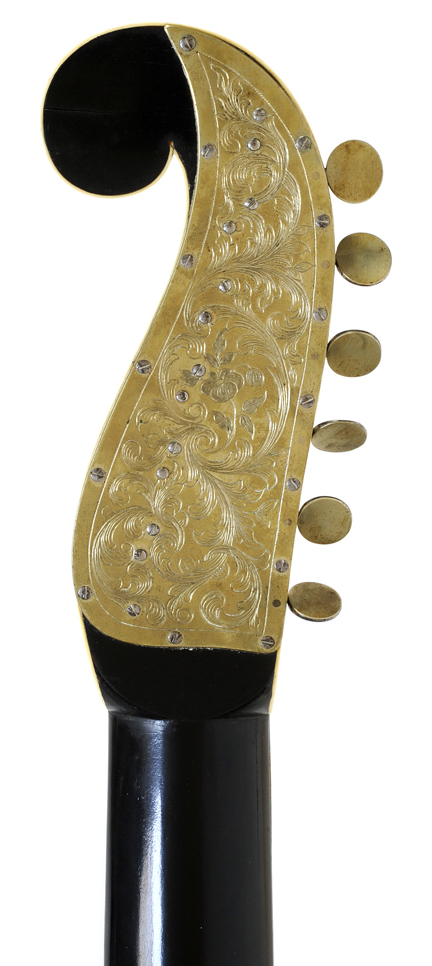
Martin soon developed a flat headstock which is similar in shape to the headstock seen on Martins to this day. These early headstocks sported ebony or ivory pegs. The ivory pegs would remain an option into the early 20th century.
Ebony and Ivory Pegs
1840's Martin "Spanish Style" Guitar
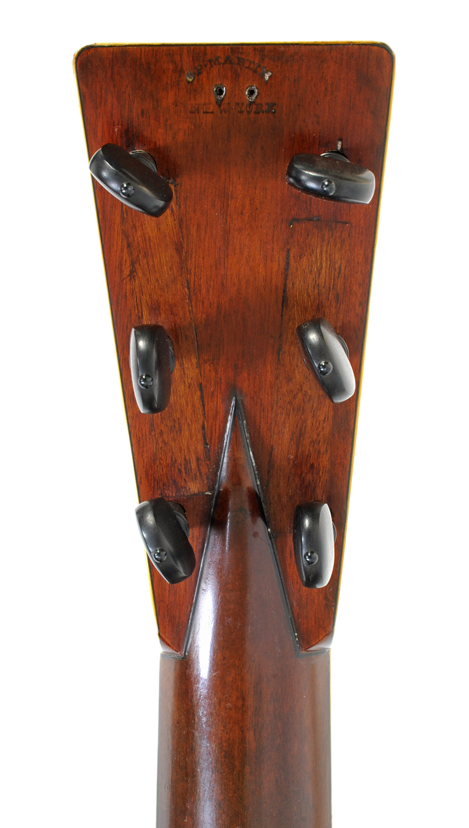
Ivory pegs vary in shape, with buttons that are round or oval, some not quite symmetrically round or oval but tapering slightly toward the peg inserted into the headstock, and most, but not all, having a small decorative element on the top of the button, which varies from one to the other in size and shape, usually carved from the ivory, but some in black, as on this 1840's "Renaissance" Martin.
1840's Martin "Renaissance" Guitar
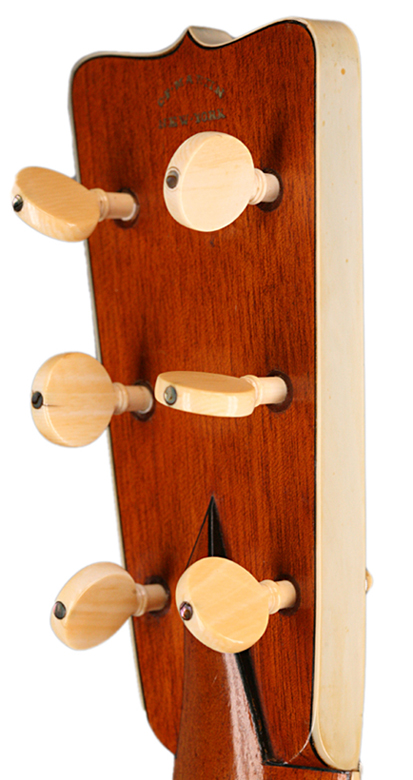
1894 Martin 0-42
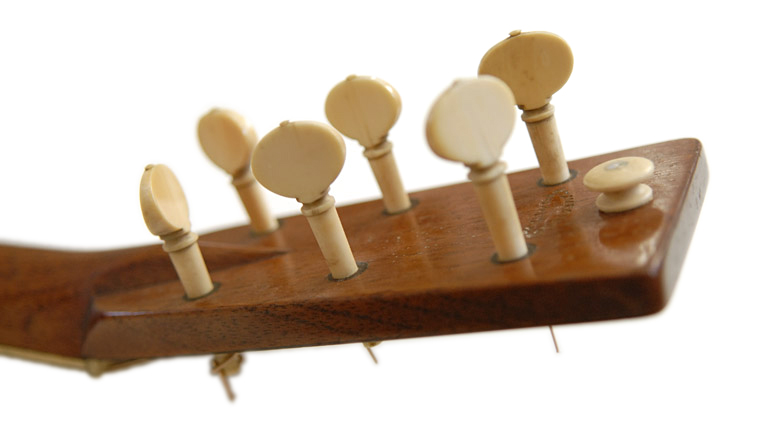
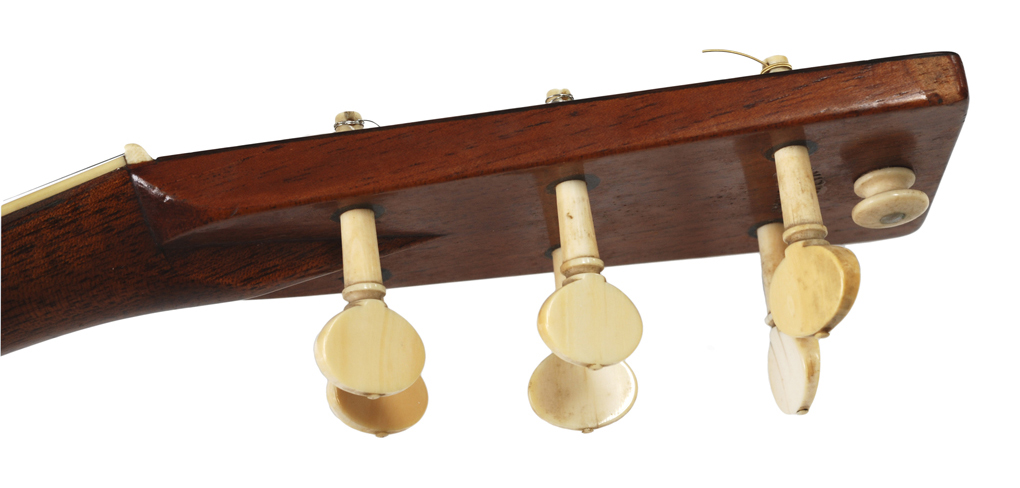
1870's Martin 2 1/2 - 26
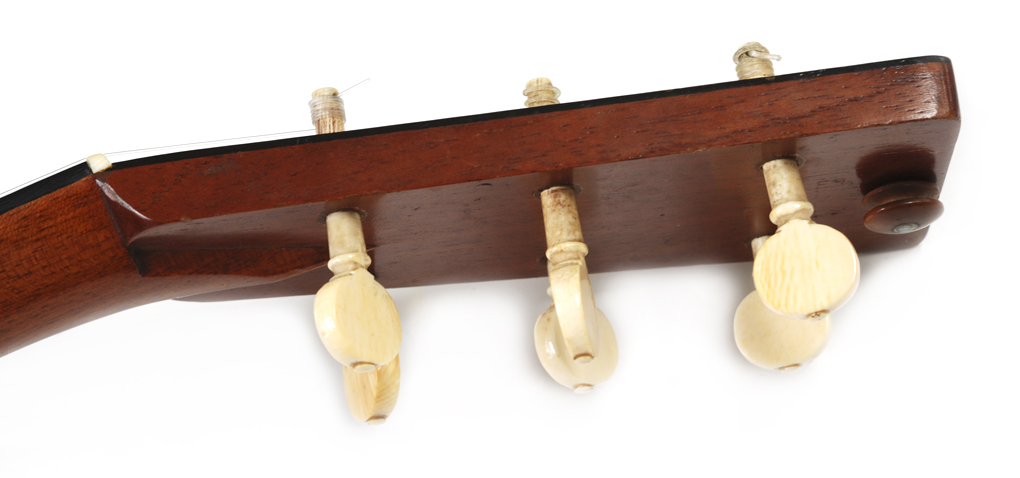
c. 1867 Martin 0-34
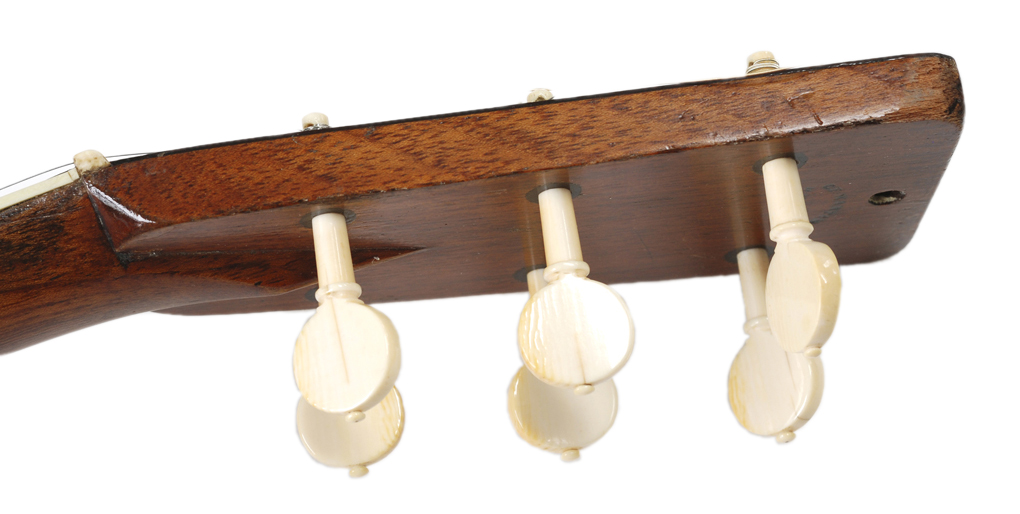
1896 Martin 2 1/2 - 42
You can see here that one peg has been replaced by another which is rounder, with a larger decorative element on the top.
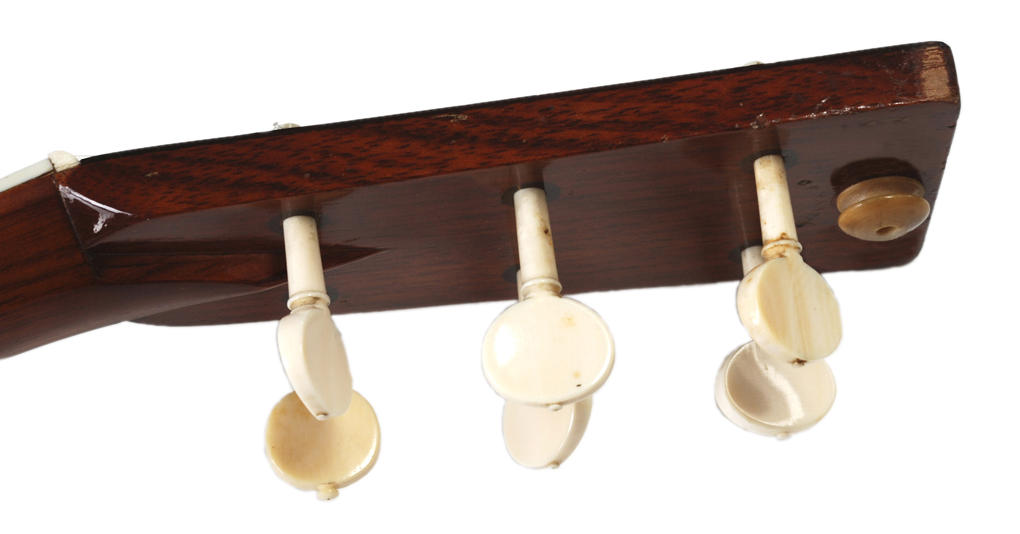
1899 Martin 1-28
This set of ivory pegs has three with small white decorative elements on the buttons, and three with flush black dots. It is quite possible that this set is all original to the guitar, with Martin having used pegs from two different batches, as the size and shape of the buttons are quite similar.
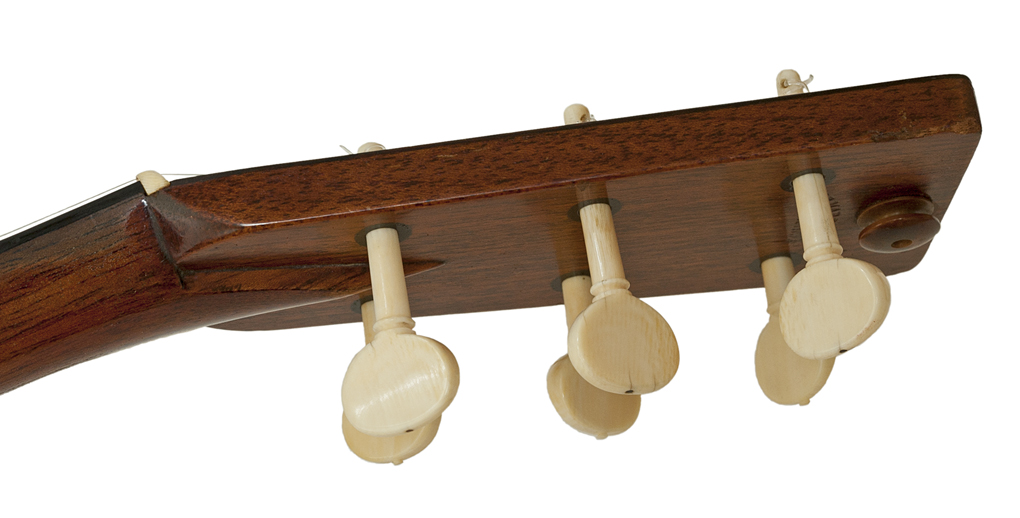
12 Fret Gears
By the 1850's, most Martins used geared tuning machines, the first of which bore the name "Jerome".
Martin 1860 2-24 with Jerome tuners
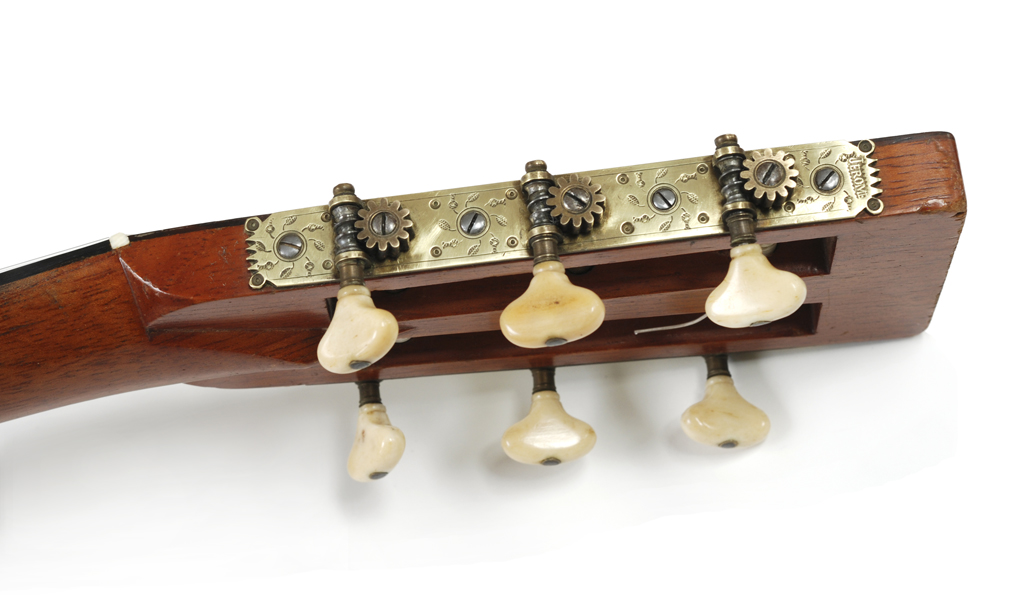
While Jerome tuners with bone buttons appear on the earliest Martins, these rare large bone rollers appear on only the earliest Jerome tuners.
1840's Spanish Style Alternate X Brace Martin Guitar
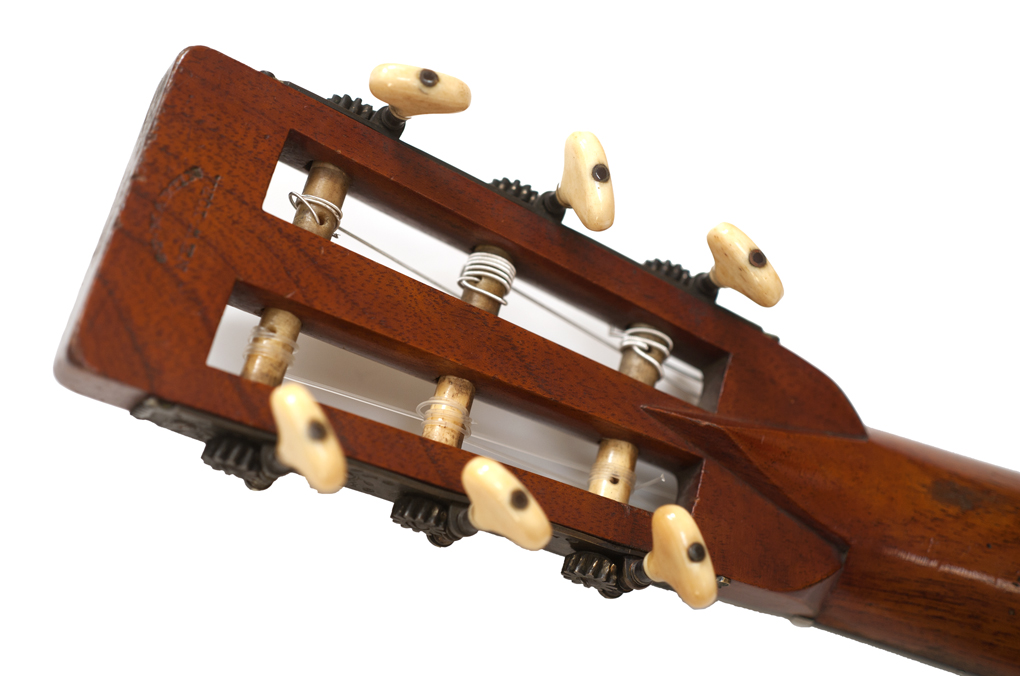
On finer early Martins, Jerome tuners are sometimes seen with fancier carved pearl buttons.
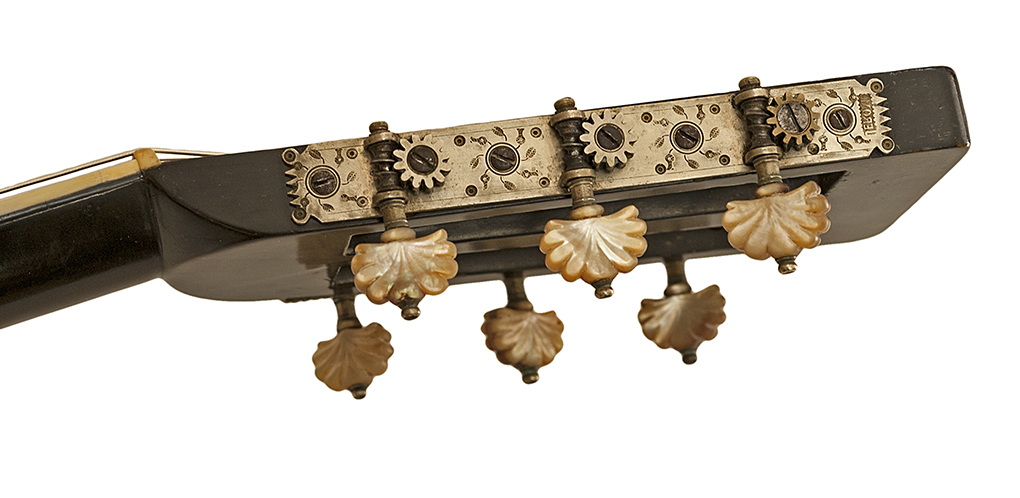
The 19th Century Tuners, also with thick, heavy gears, made after the Jeromes are said to have been made by Seidel
Martin 1870's 1-26
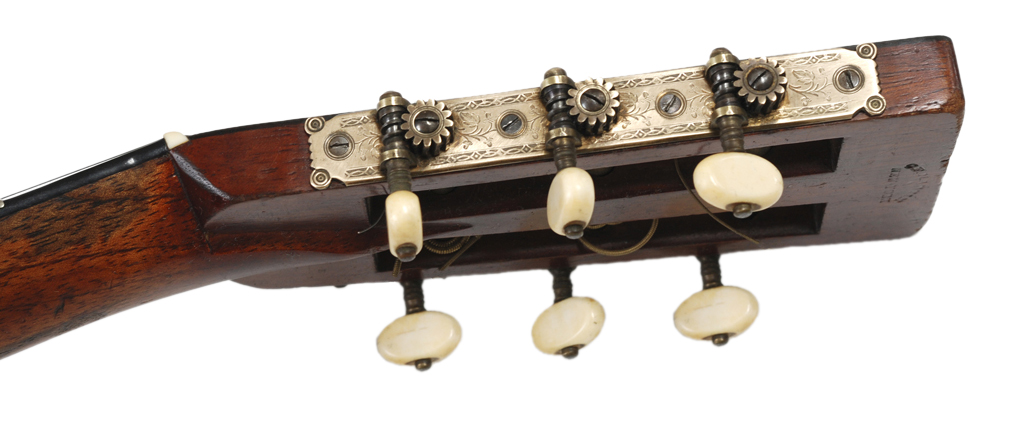
Martin 1870's 1-28
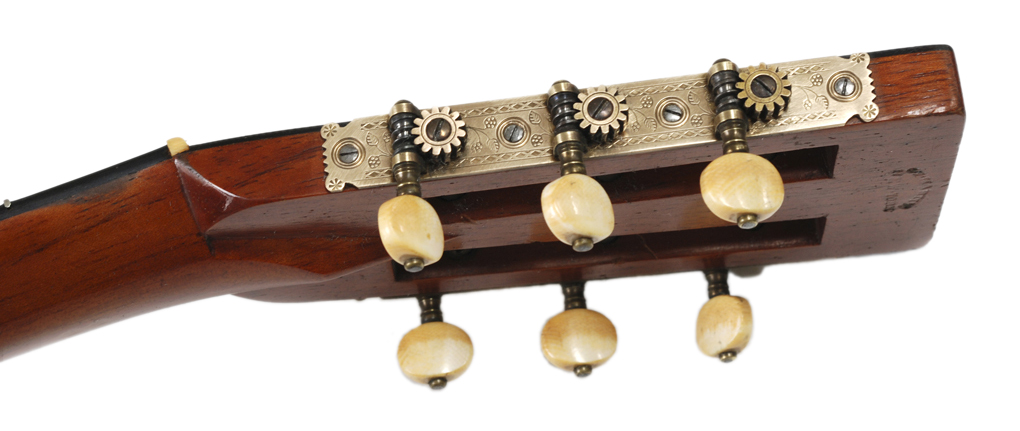
Martin 1870's 2-27
I can't say who made these unusual tuners that appear on some of the Style 2-27. These are reminiscent of the shape of a beautiful silver tuner that appeared on the early Style 40.
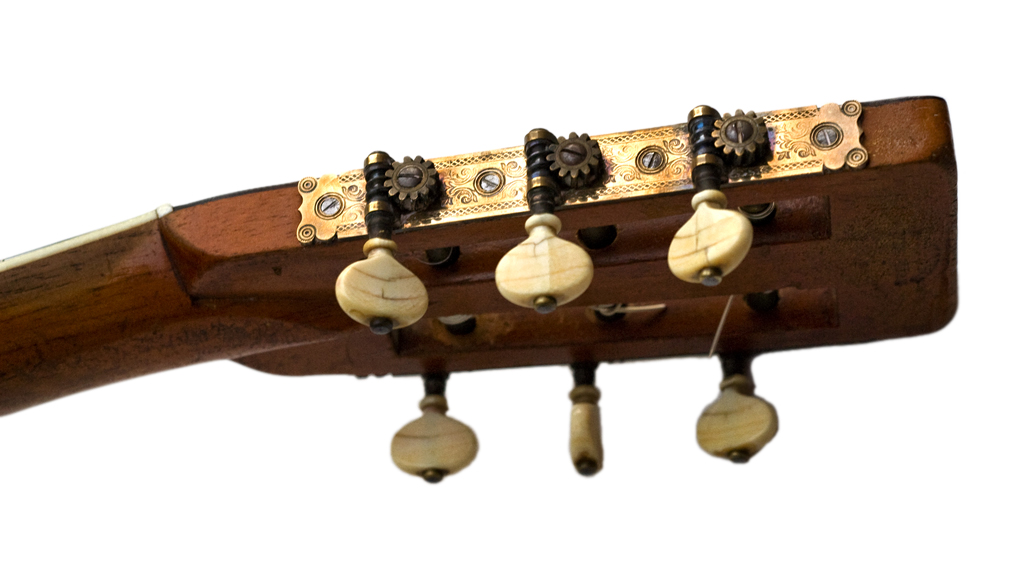
This is another uncommon tuner style that shows ups here on an unusual 1874 Martin with pearl buttons.
1874 Martin 1-28
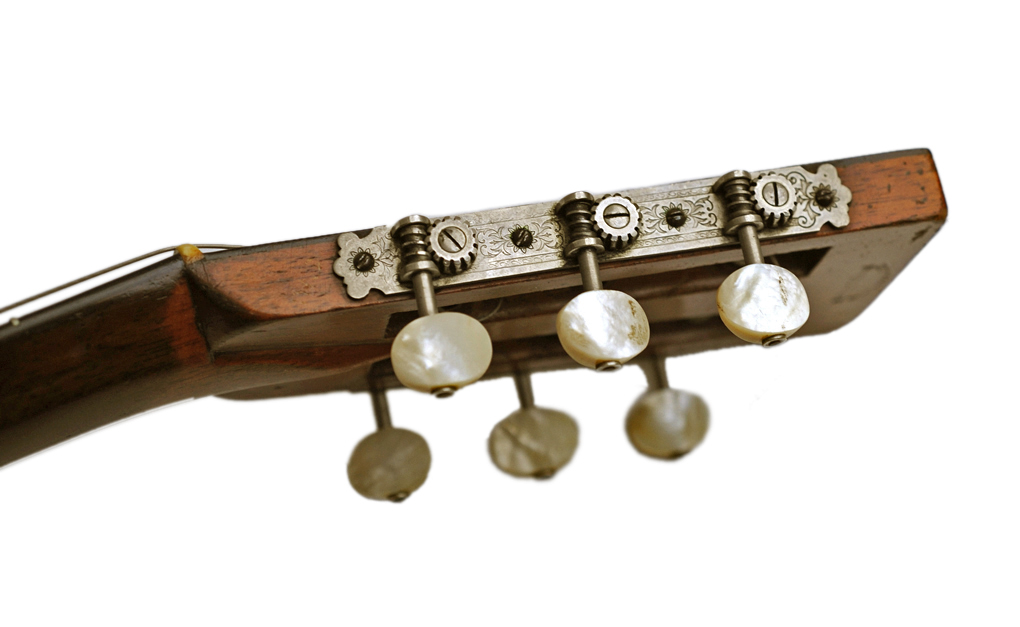
These three on a plate 12 fret tuners show that Martin used the Seidel style tuners with concentric circles on the corners at least through 1897.
Martin 1897 1-21
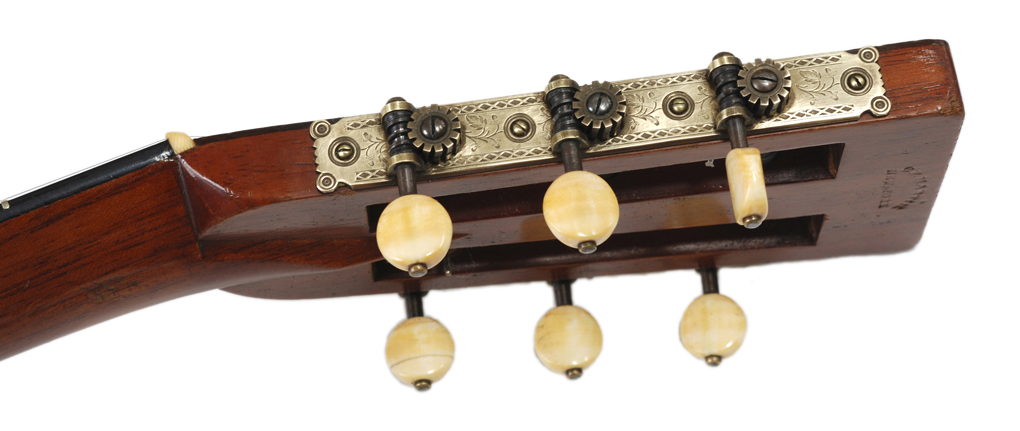
This 1902 Style 00-42 prototype for the Style 45, with pearl buttons, shows that the Seidel Style tuners with imprinted corners and those with concentric circles were used contemporaneously through the years.
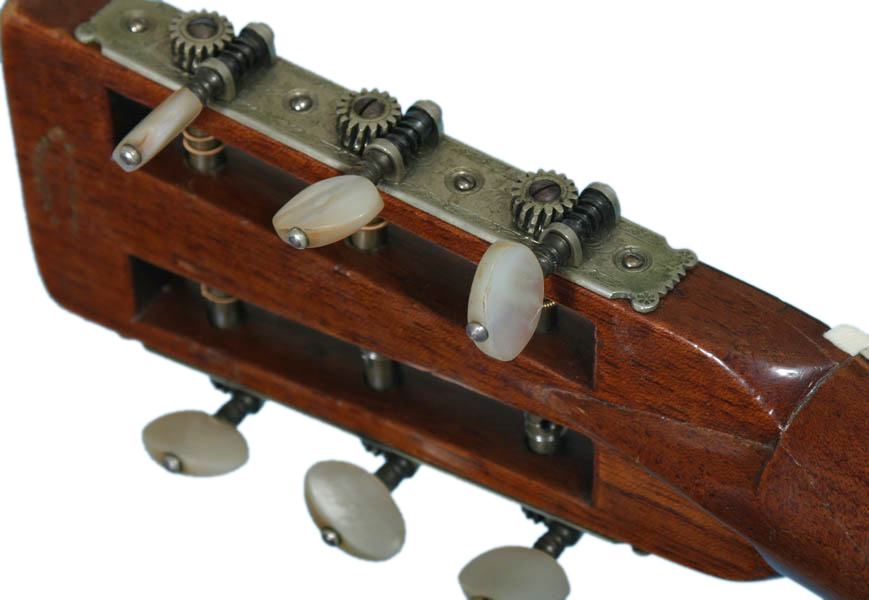
These three on a plate 12 fret tuners with saw tooth ends and rounded "Mickey Mouse" corners, beveled gears, and an early engraved design were made by Waverly.
A number of high end guitars and mandolins, seen often through the teens, were shipped with Waverly tuners with beautiful fancy buttons produced by Handel.
These tuners show that the Waverly tuners replaced the Seidels between 1902 and 1905.
1905 00-42S
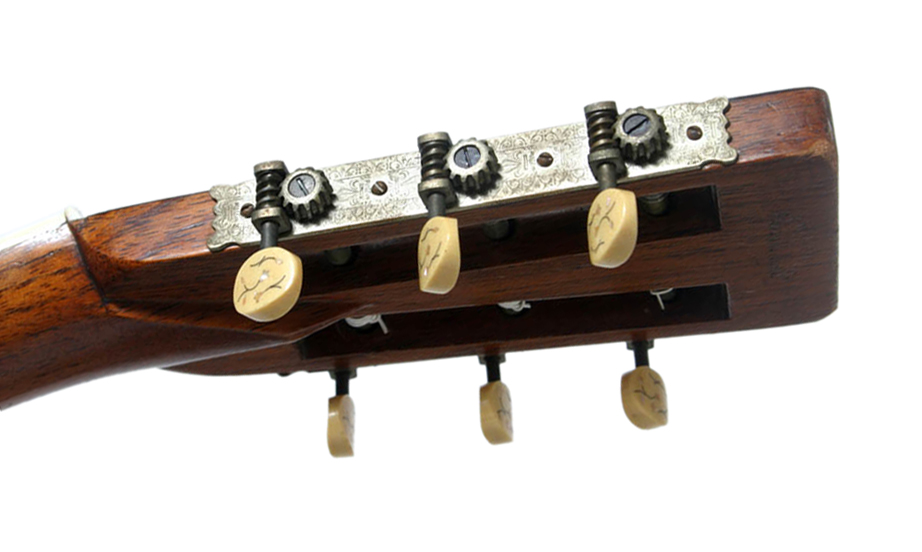
These three on a plate 12 fret tuners with saw tooth ends and rounded "Mickey Mouse" corners made by Waverly have the common "Irish Rose" floral design.
Martin 1907 1-28
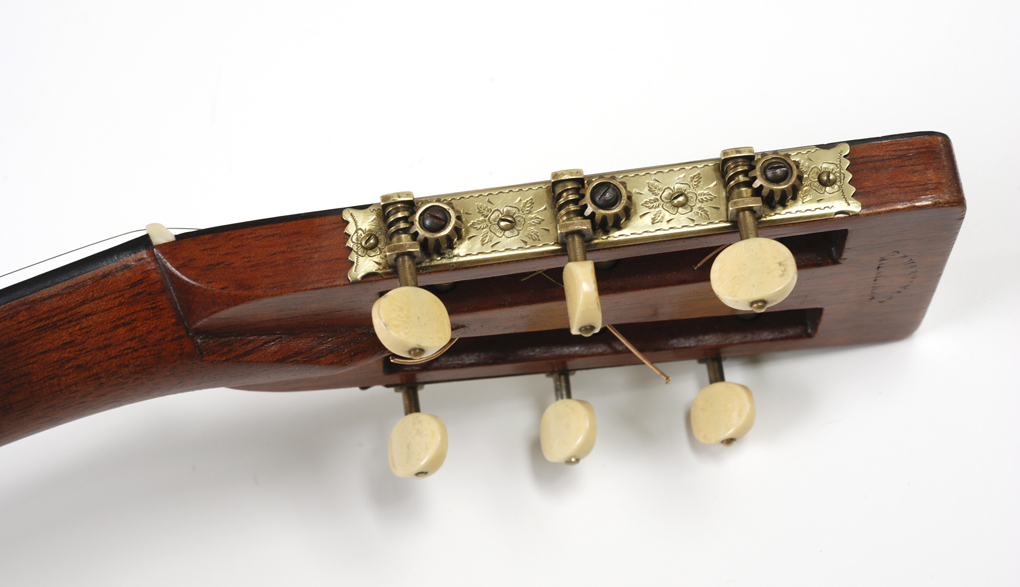
These Waverlys combine the fleur-de lis pattern with one version of the double hatched lines that would be seen often on Waverlys for many years.
Martin "Nunes" 1917 Style 1400
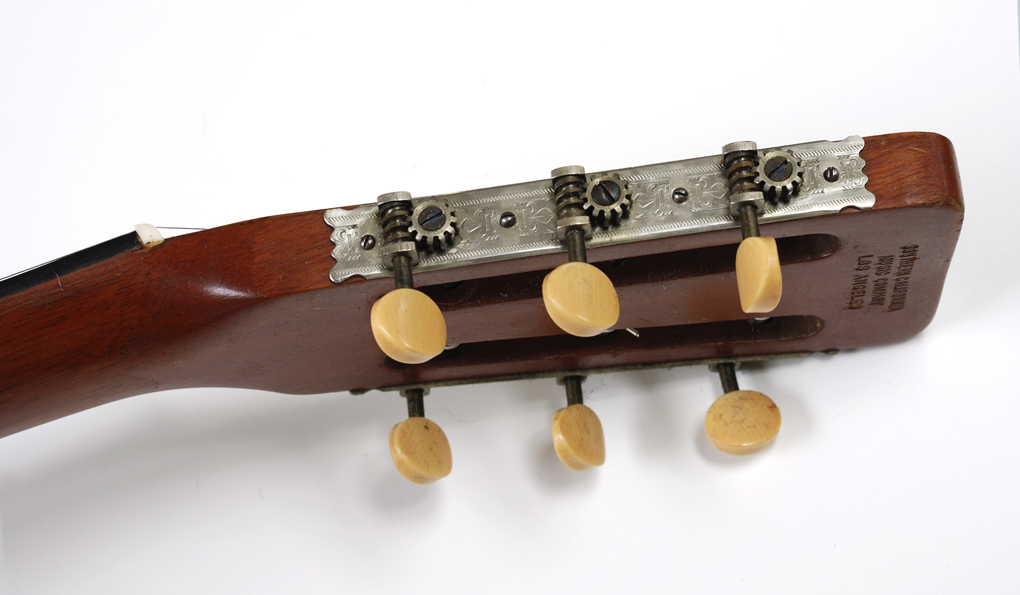
Martin 1917 0-30
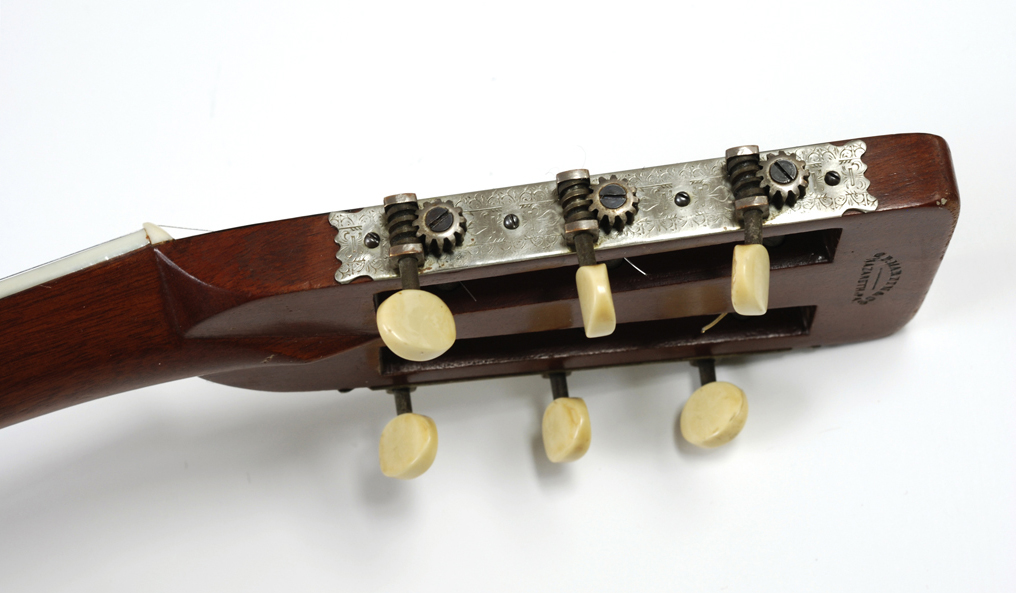
A plainer brass version of the Waverly tuner, with simple hatched lines, was used on less expensive Martins.
1916 Ditson Style 22
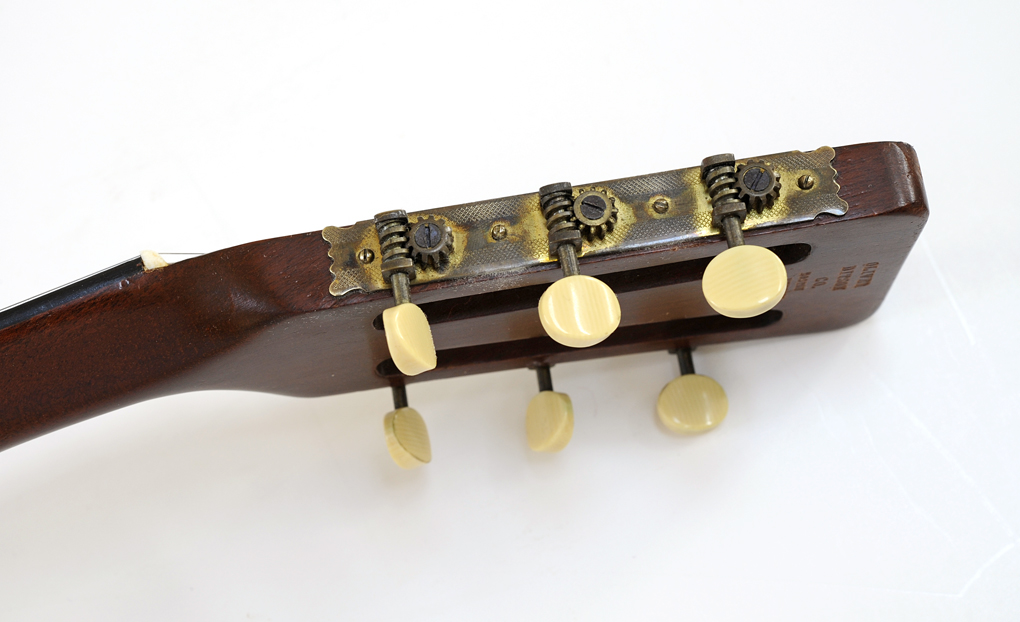
1913 Martin Foden Special Style E
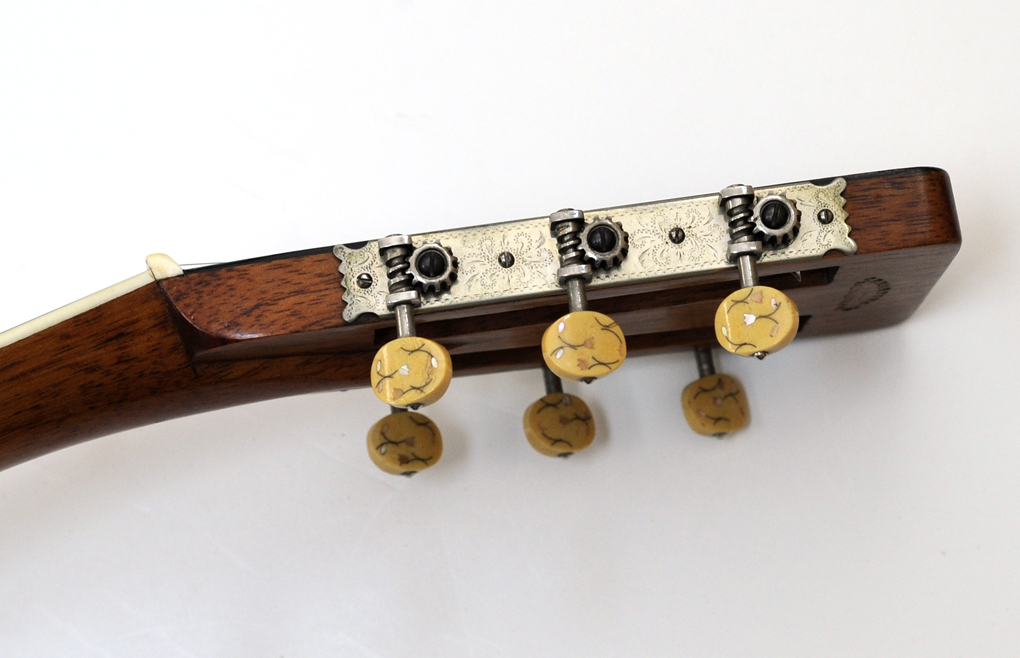

The tuners, most likely made by Waverly, are seen on some Style 18 guitars in the mid 1920's.
1923 Martin spruce top S.S. Stewart 0-17 Special
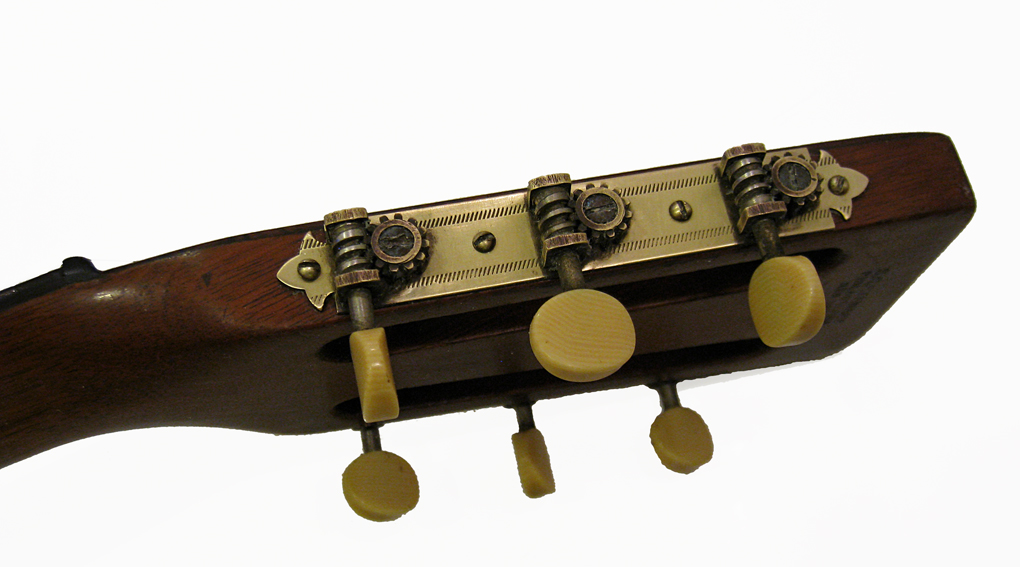
These Waverly WG-31 tuners with an engraved "Irish Rose" floral design were common on rosewood Martins in the 1920's.
1926 Martin 0-28
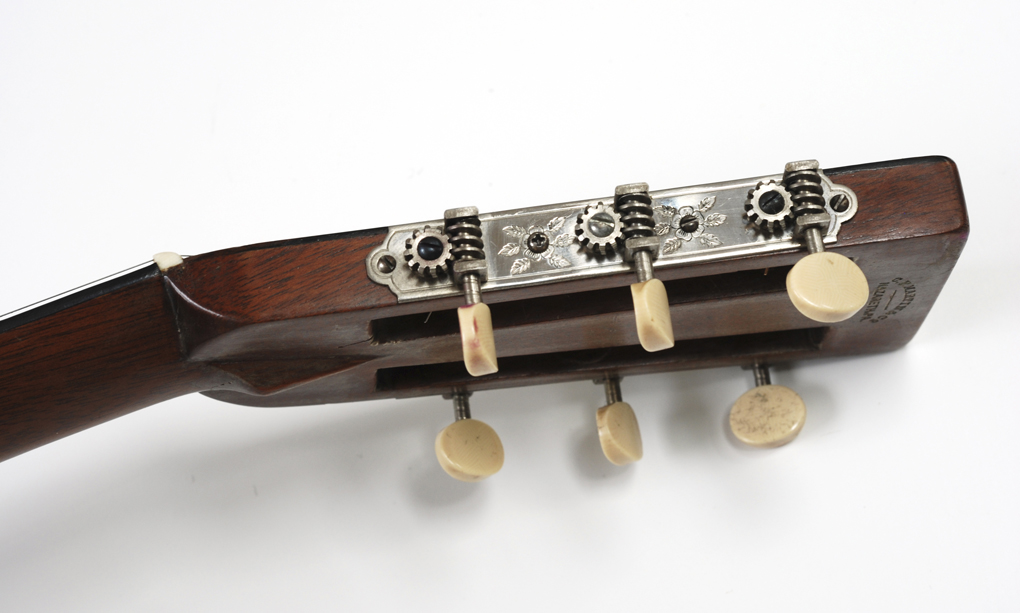
Martin 1926 00-28
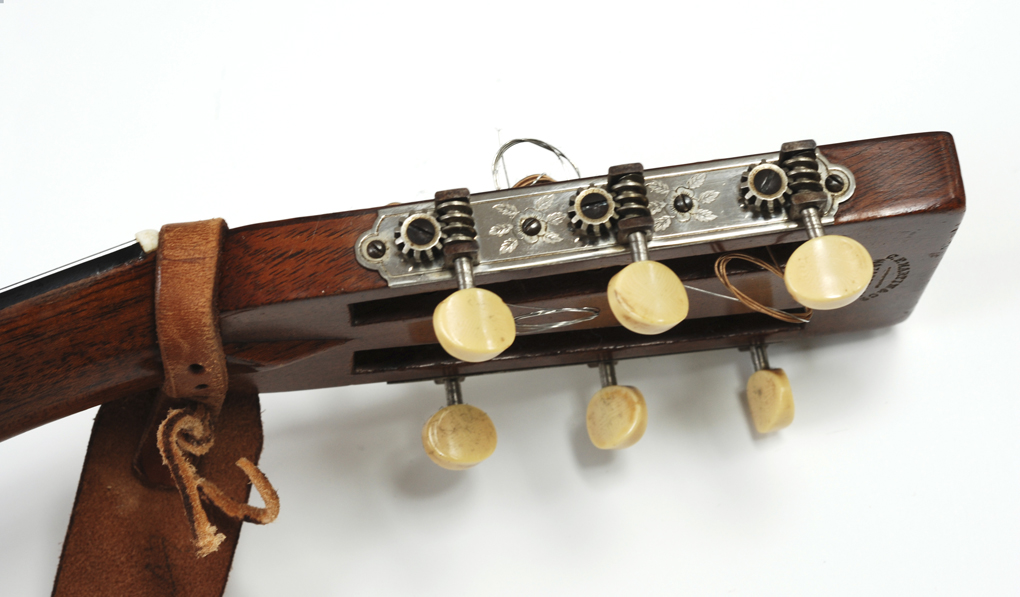
The plain brass Waverly WG-31 tuners with an engraved outline were common on mahogany Martins in the 1920's.
Martin 1927 0-18K
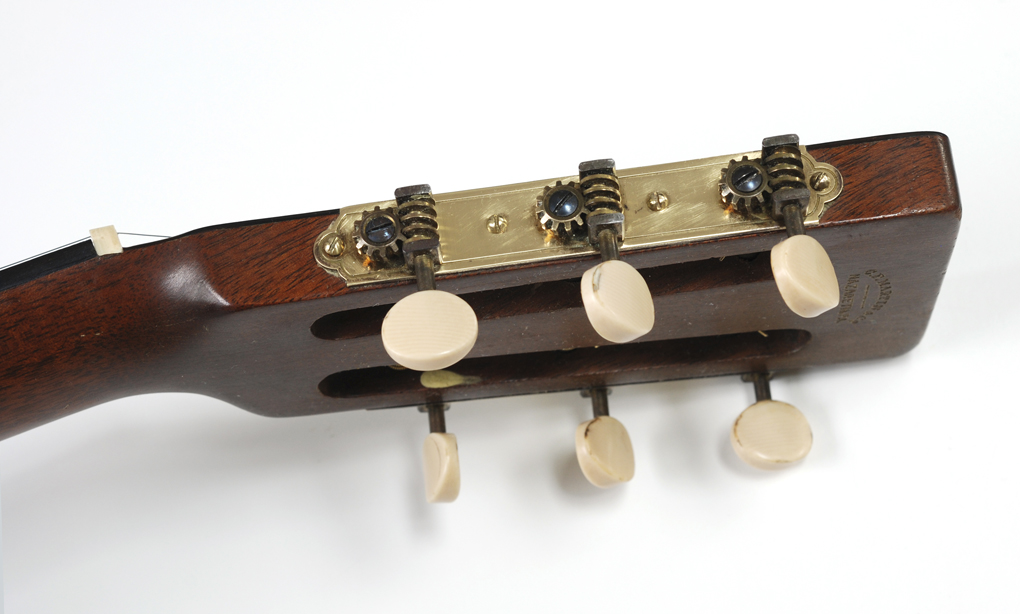
This is one of the less common tuner styles seen on mid 1920's Martins
Martin 1927 000-18
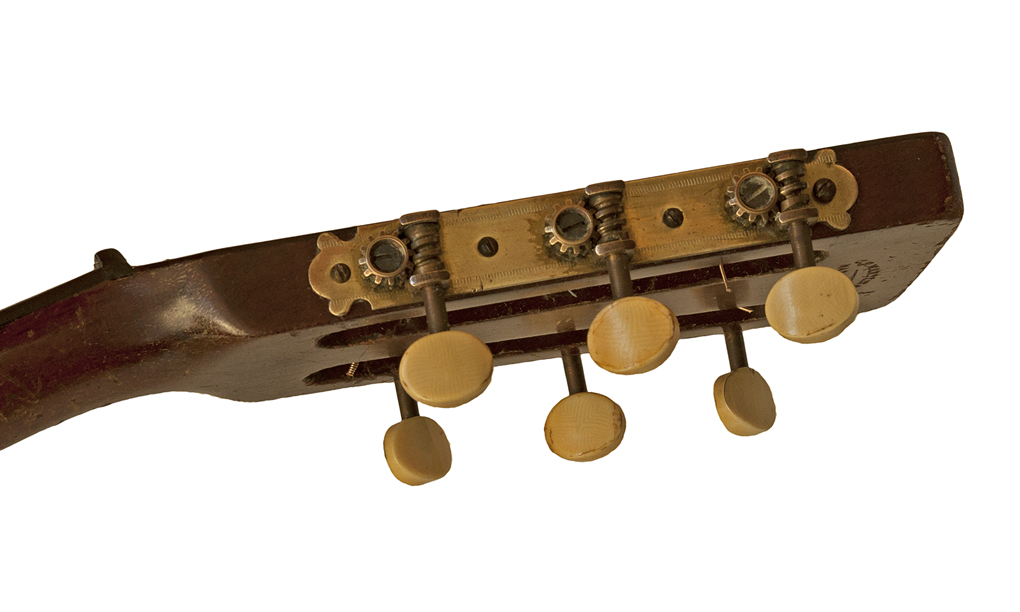
These Waverly WG-31 tuners with an engraved leaf design were also used on better Martins in the 1920's, and were also seen on Gibsons such as the Nick Lucas Model.
1929 000-28
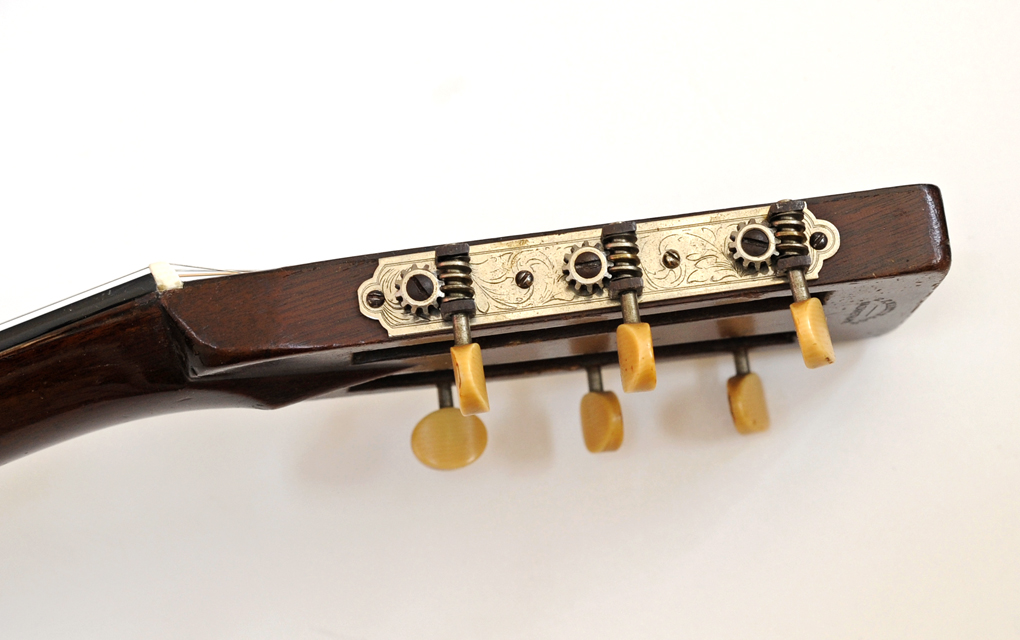
Inexpensive square end machines were used on many guitars built by many makers, and were used by Martin on their less expensive guitars in the 1930's.
Many, if not all of these, are clearly made by Waverly, with the same cogs and screws as on other Waverly tuners of the 20's.
Martin 1930 2-17
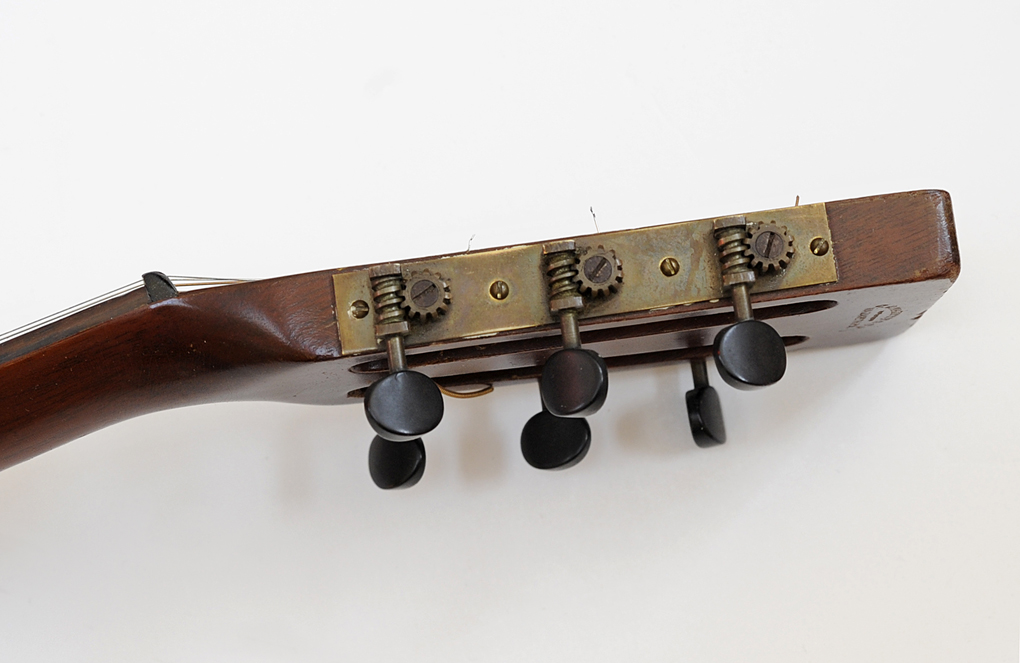
The "Clipped End" Grover tuners of the mid 1930's were most often seen in the form used with Martin's first solid headstocks with machines, but were occassionally seen on 12 fret Martins of the day.
Martin 1934 00-40H
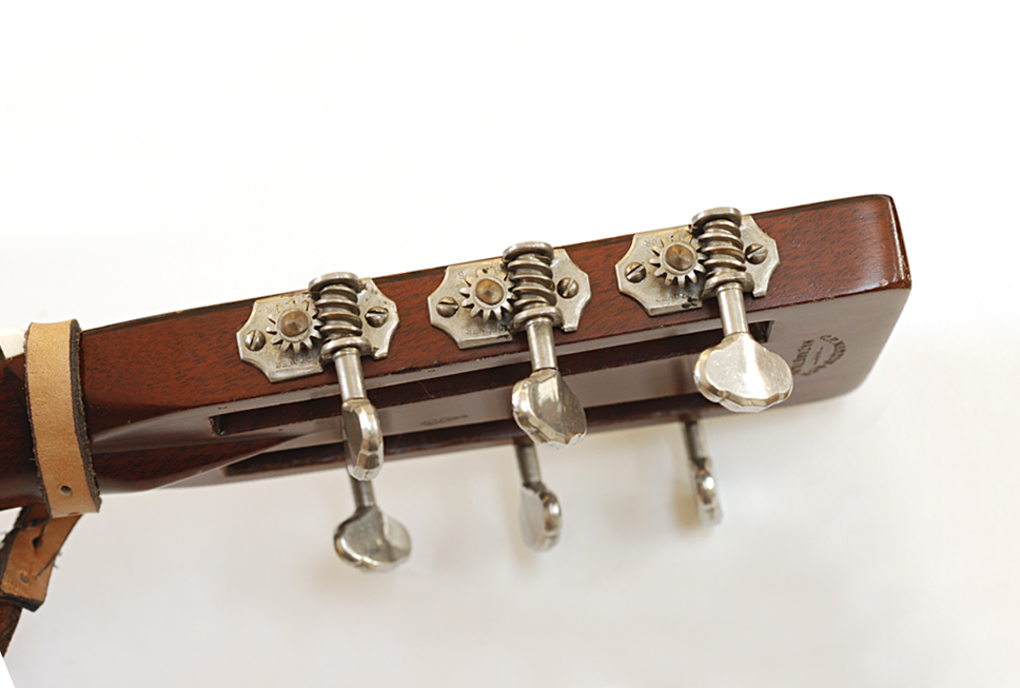
Some new Martins use a reproduction of a leaf design Waverly WG-31
Martin 2006 Ditson Dreadnaught 111
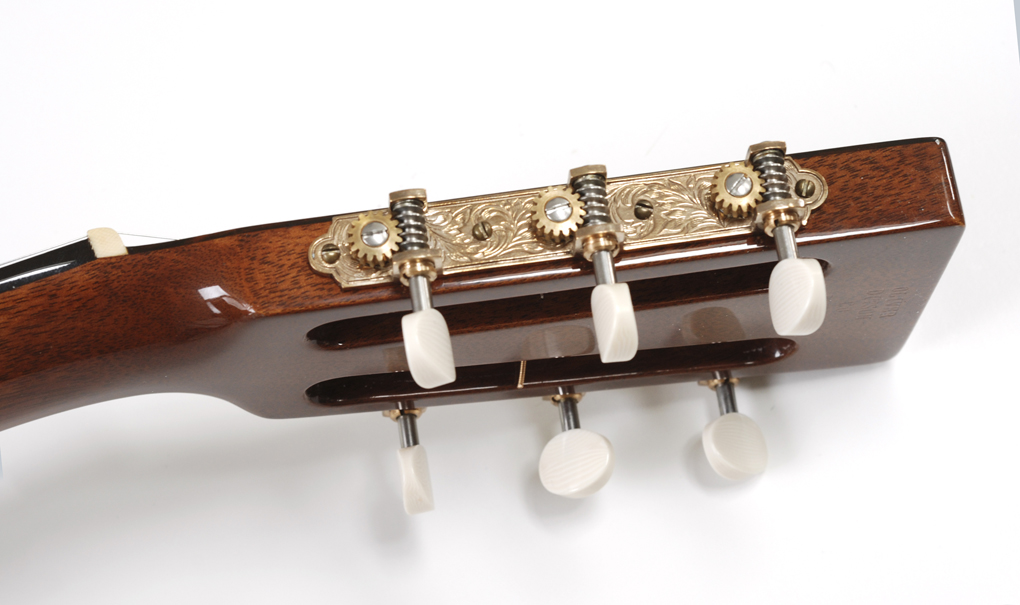
vintagemartin.com
To See Robert Corwin's Classic Photography of Folk and Roots Musicians, visit:
For Information on Photography for
Exhibition, Publication, CD's, Promotion, Web Pages, Tour Books,
to Purchase Photographic Prints, or
If You Have Questions or Suggestions About This Web Site or Vintage Martin Guitars:
e-mail: Robert Corwinentire site copyright ©1998 through 2010 Robert Corwin/Photo-Arts. All rights reserved.